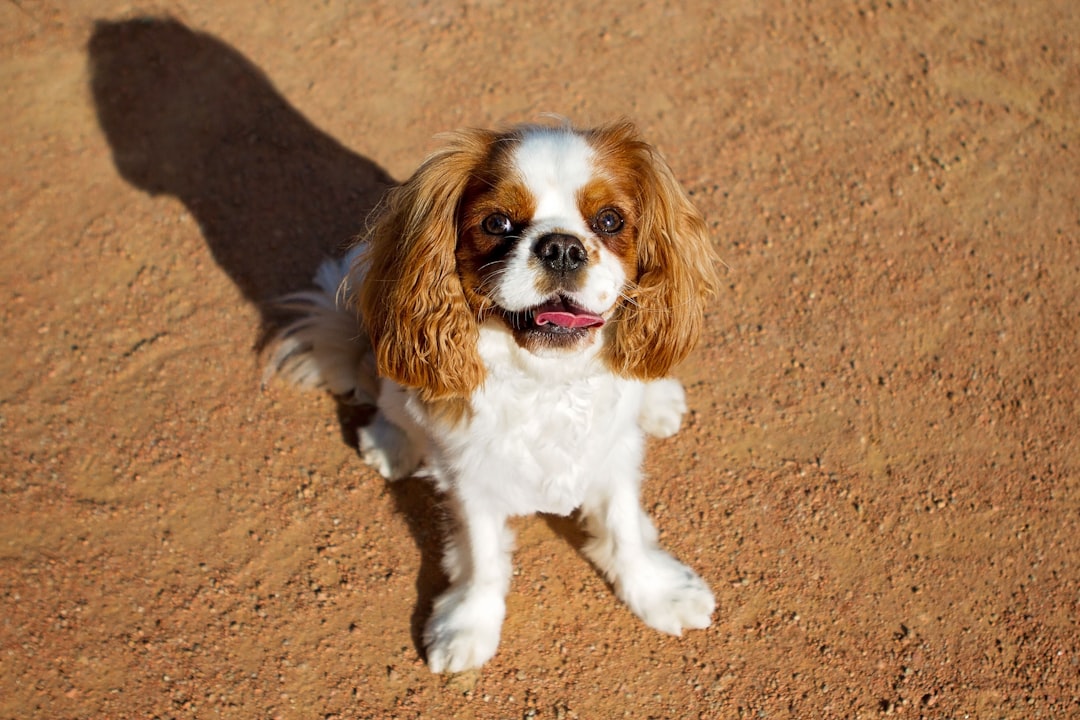The Regal Evolution of Cavalier King Charles Spaniel: From Royalty to Modern-Day Companion
Discover the fascinating history and evolution of the Cavalier King Charles Spaniel breed, from its royal origins in the 17th century to its recognition by major kennel clubs, along with insights into its health, behavior, care, and popularity as a beloved family companion.
Historical Significance of the Cavalier King Charles Spaniel
The historical significance of the Cavalier King Charles Spaniel dates back to the 17th century when the breed gained royal stature and prominence during the rule of the Stuart Kings, Charles I and Charles II. The breed was highly esteemed and was often featured in the paintings of renowned artists, including Rembrandt, Van Dyck, and Gainsborough, further solidifying its association with nobility and elegance. For example, the famous painting “Charles II of England” by Peter Lely prominently features a Cavalier King Charles Spaniel, showcasing its close connection to royalty and aristocracy.
During the 1800s, the breed underwent a significant transformation, resulting in the emergence of the short-faced, dome-headed English Toy Spaniel, which deviated from its original form and characteristics. This shift in the breed’s appearance marked a pivotal moment in its evolution and development, leading to distinct differences from its earlier depiction in historical paintings. This change in the late seventeenth century reflected a significant transition for the Cavalier King Charles Spaniel, altering its physical attributes and setting the stage for subsequent efforts to preserve its original form.
The revival of the 17th-century spaniel in the 20th century, spearheaded by Roswell Eldridge, marked a crucial turning point in the breed’s history. Eldridge’s initiative led to the formation of special classes at prestigious dog shows, attracting breeders who shared his vision of restoring the breed to its former glory. This revival effort ultimately resulted in the breed’s recognition by the Kennel Club (UK) in 1945, signifying a remarkable achievement in preserving the breed’s historical lineage and royal heritage. Subsequently, the breed received formal recognition by the American Kennel Club in 1996, further cementing its enduring legacy and historical significance in the world of purebred dogs.
 Evolution and Development of the Breed
Evolution and Development of the Breed
The history of the Cavalier King Charles Spaniel dates back to the 17th century, where it gained its royal stature and prominence during the rule of the Stuart Kings Charles I and Charles II. During this period, the breed was prominently featured in the paintings of renowned artists such as Rembrandt, Van Dyck, and Gainsborough, reflecting its regal status and significance in that era.
In the late 17th century, significant changes occurred in the breed’s development when it was inter-bred with flat-nosed breeds, altering its physical characteristics, including its coat, colors, and overall appearance. This period marked a shift in the breed’s traits, leading to distinct changes from its original form. However, in the early 20th century, dedicated breeders initiated the revival of the original Cavalier King Charles Spaniel, aiming to recreate its historical traits and appearance. This revival effort ultimately led to the breed’s recognition by major kennel clubs, with a focus on identifying and preserving its unique coat colors and physical attributes, such as the recognized colors of Blenheim, tricolor, black and tan, and ruby, as well as its smooth and silky coat.
The evolution and development of the Cavalier King Charles Spaniel breed showcase its historical significance and the continuous efforts to preserve its distinctive characteristics, reflecting its enduring appeal and recognition in modern times.
Health, Behavior, and Care
The Cavalier King Charles Spaniel is known to be prone to several health issues, which can affect their overall well-being. One of the most common health problems that Cavaliers are predisposed to is mitral valve disease, a condition that affects the heart and can lead to heart murmurs and heart failure. This hereditary condition is prevalent in the breed, and responsible breeding practices are crucial to mitigate its prevalence.
In addition to mitral valve disease, Cavaliers are also susceptible to syringomyelia, a painful condition where fluid-filled cavities develop within the spinal cord. This condition can cause discomfort, pain, and neurological issues in affected dogs. Furthermore, the breed is known to be prone to hip and knee disorders, which can impact their mobility and lead to orthopedic challenges. Regular veterinary check-ups, appropriate exercise, and a balanced diet are essential in managing these health concerns and ensuring the overall well-being of Cavalier King Charles Spaniels.
The behavioral traits of the Cavalier King Charles Spaniel are highly regarded, with the breed being recognized for its affectionate nature, playfulness, and sociable demeanor. These dogs thrive on human companionship and are known for being excellent family pets, being good with children and other dogs. Their loving and gentle disposition makes them well-suited for various households and social environments. However, their grooming and social needs require special attention and care. Regular brushing, ear cleaning, and dental care are essential to maintain their silky coat and overall hygiene. Moreover, providing them with adequate social interaction, mental stimulation, and exercise is vital to ensure their emotional well-being.
Popularity and Recognition
The Cavalier King Charles Spaniel has a rich history and has gained popularity in both the United Kingdom and the United States. Recognized by major kennel clubs and organizations such as the Kennel Club and the American Kennel Club, the breed has established itself as a beloved and sought-after companion for families and individuals alike. This recognition by esteemed organizations underscores the breed’s enduring appeal and its status as a cherished household pet, [2],.
For instance, the breed’s recognition by the American Kennel Club in 1996 was a significant milestone in its history. This recognition not only solidified its position as a distinct and valued breed in the United States but also contributed to its growing popularity and appeal among dog enthusiasts and families. Additionally, the Cavalier King Charles Spaniel’s recognition by the Kennel Club (UK) in 1945 following Roswell Eldridge’s initiative further emphasizes its importance and historical significance in the realm of purebred dogs.
Moreover, the breed’s reputation as an ideal family dog and companion for various households has contributed to its widespread recognition and appeal. Renowned for its affectionate nature, playfulness, and compatibility with children and other pets, the Cavalier King Charles Spaniel continues to captivate the hearts of dog lovers, thereby solidifying its place as a beloved and cherished breed in modern times.
 Conclusion
Conclusion
The historical significance and evolution of the Cavalier King Charles Spaniel breed underscore its enduring appeal and recognition in modern times, reflecting its journey from royal favor to its revival and prominence in contemporary society. This breed’s rich history dates back to the 17th century when it gained royal stature during the rule of the Stuart Kings Charles I and Charles II. The breed was prominently featured in the paintings of renowned artists such as Rembrandt, Van Dyck, and Gainsborough, reflecting its cherished status in society during that era.
The Cavalier King Charles Spaniel’s evolution into the short-faced, dome-headed English Toy Spaniel in the 1800s marked a significant change in its physical characteristics. This transformation altered the breed’s appearance, leading to a departure from its original form. However, in the 1920s, an American named Roswell Eldridge initiated the revival of the 17th-century spaniel by offering a prize for dogs resembling the old longer-nosed, flat-skulled Spaniels. His efforts were successful, and the breed was recognized by the Kennel Club (UK) in 1945, signifying a crucial milestone in the restoration of the breed to its former glory.
The recognition of the Cavalier King Charles Spaniel by the American Kennel Club in 1996 further solidified its position in the modern era. This recognition reflected the breed’s enduring legacy and continued popularity, showcasing its significance as a beloved companion and family dog. The breed’s journey from historical eminence to contemporary recognition highlights its remarkable resilience and timeless appeal, making it a cherished and iconic breed in the world of canine companions.
Frequently Asked Questions (FAQs)
- What are the recognized colors of the Cavalier King Charles Spaniel breed? The breed has four recognized colors: Blenheim, tricolor, black and tan, and ruby.
- When and how did the breed change in the late seventeenth century? The breed changed in the late seventeenth century when it was inter-bred with flat-nosed breeds, leading to alterations in its coat, colors, and physical attributes.
- Who initiated the revival of the Cavalier King Charles Spaniel breed in the 1920s? The revival of the breed was initiated by Roswell Eldridge, who offered a cash prize to breeders for producing male and female spaniels resembling those from the time of Charles II.
- What health problems are Cavaliers prone to? Cavaliers are prone to health problems such as mitral valve disease, syringomyelia, hip and knee disorders, eye problems, and ear disorders.
- When was the breed recognized by the Kennel Club in the United Kingdom? The breed was recognized by the Kennel Club in the United Kingdom in 1945.
- What motivated Roswell Eldridge to restore the 17th-century spaniel? The motivation behind Roswell Eldridge’s efforts to restore the 17th-century spaniel is not entirely clear, but his initiative was successful in reviving the breed.
- In which centuries does the history of the Cavalier King Charles Spaniel date back to? The history of the Cavalier King Charles Spaniel dates back to the 16th, 17th, and 18th centuries in northern Europe.
- What are the distinct physical characteristics of the Cavalier King Charles Spaniel? The breed is known for its long back, floppy ears, and medium coat with colors including red, red and white, and black and tan tricolor.
- What are the behavioral traits of the Cavalier King Charles Spaniel? Cavaliers are affectionate, playful, and good with children and other dogs, reflecting their amiable nature and temperament.
- What specific support and resources does Hill’s Pet offer for Cavalier King Charles Spaniel owners? Hill’s Pet offers a variety of dog food, including puppy, adult, and mature dog food, as well as food for specific health conditions like digestive issues, weight management, and urinary health. The company also provides information for new pet parents, pet adoption resources, and supports various community programs.


